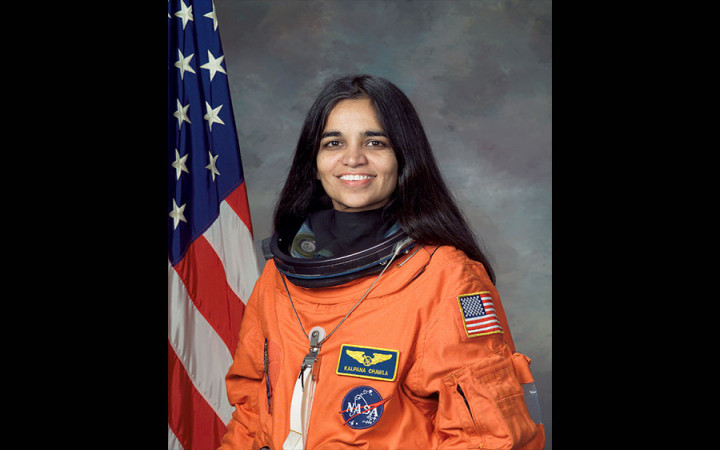Today’s Wonder of the Day was inspired by matthew. matthew Wonders, “How did the space ship Columbia fail?” Thanks for WONDERing with us, matthew!
Do you dream of becoming an astronaut? Lots of people grow up wondering what it would be like to travel through space. Like the subject of today’s Wonder, some work hard to make that dream a reality. Let’s learn together about astronaut and engineer Kalpana Chawla.
Kalpana Chawla was born on March 17, 1962. She and her family lived in Karnal, a city in the North Indian state of Haryana. As a child, Kalpana was very interested in planes. Chawla and her father watched local flying clubs together. She chose her own name when she started school. Kalpana can mean “idea” or “imagination” in Hindi.
Chawla earned several flight licenses. She piloted gliders and planes with different engines and gained certification as a flight instructor. She enjoyed flying stunts.
She received her first college degree in 1982. She earned her Bachelor’s degree in aeronautical engineering while still in India. Professors tried to talk her out of studying her chosen field. They said that girls couldn’t go very far with that education. Chawla persisted in doing what she loved.
After moving to the U.S., Chawla studied aerospace engineering and got a Master’s degree. In 1988, the University of Colorado granted her a PhD in the same subject. That year, Chawla started working at NASA.
Chawla focused on studying air flow around aircraft during flight. She tested ways to use computers in her work. Her research used software that mimicked what happened to aircraft during complex moving problems.
She became a naturalized U.S. citizen in 1991. That same year, Chawla applied to the NASA Astronaut Corps. NASA selected her in December 1994. She joined the 15th Group of Astronauts as a candidate in March 1995.
Chawla was proud that she had proved her former professors wrong. She found a career in her field! She wanted other girls to have the same opportunity. Starting in 1998, NASA invited two students from Chawla’s school in India to the Summer Space Experience Program. She prepared a traditional Indian dinner at her home each year for the students.
After extensive training and testing, NASA assigned Kalpana Chawla her first space flight mission. On November 19, 1997, she was one of six on the crew for mission STS-87 of the space shuttle Columbia. Chawla was to operate the robotic arm to launch a satellite. She made history as the first Indian woman in space. Chawla and the crew orbited the Earth 252 times on the mission.
Her second mission for NASA was also aboard the Columbia. On January 16, 2003, Chawla and six others launched for a 16-day flight. The crew performed 80 microgravity experiments. NASA scheduled the shuttle to land February 1, 2003. A problem with insulation on a wing caused the craft to break apart before touching down. There were no survivors.
Since her passing, the U.S. and India have given Chawla several awards. NASA gave her the Distinguished Service Medal. They gave her the Congressional Space Medal of Honor. They named an asteroid, a hill on Mars, memorials, buildings and spacecraft in her honor.
Are you inspired by women like Kalpana Chawla? Would you like to fly into space or be the first to accomplish a goal? Dare to dream big!
Standards: AASL.D.IV, CCRA.R.1, CCRA.R.2, CCRA.R.3, CCRA.R.10, CCRA.L.3, CCRA.L.4, CCRA.L.5, CCRA.L.6, NCAS.CR.1




